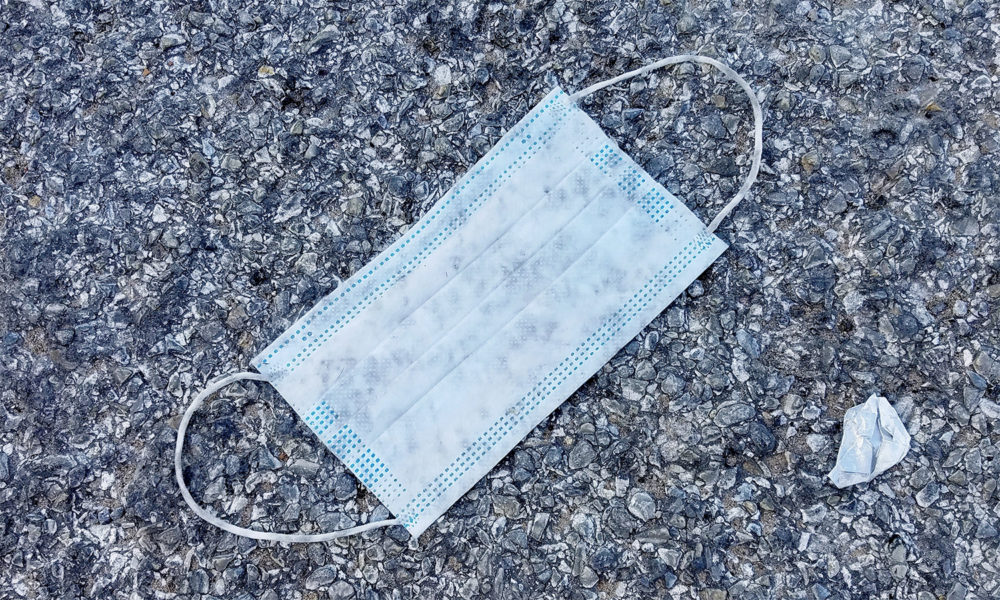Last week, I biked from my family’s rural house to nearby Sister Bay, a picturesque town in eastern Wisconsin. Laughter spilled out from the windows of restaurants. Couples wandered in and out of stores. At the lake nearby, kids wrestled on the docks, and people crowded into public restrooms to change into swimsuits.
Some had masks. Most did not.
In another time, this would be an idyllic place. But today, it is an eerie reminder of the unreality in which so many people in the US exist.
Uncertainty across the state and nation
Outside this unreality, COVID-19 reigns. In Wisconsin, more than 62,000 people have tested positive for the novel coronavirus, and nearly 1,000 have died. In America, nearly 160,000 people are dead from COVID-19. These deaths are not distributed equally: Black people are dying at 2.5 times the rate of white people. Globally, deaths number more than 714,000. If global deaths comprised a US city, Boston or Washington, DC would be wiped off the map.
In Wisconsin, as elsewhere in the US, people have been given an impossible task. Absent consistent guidance from leadership, they must decide for themselves how seriously to take the pandemic.
Guidance from leaders has indeed been inconsistent. In April, Governor Tony Evers tried to postpone Wisconsin’s primary election, but a string of partisan court decisions quashed the effort and forced thousands of residents, who never received mail-in ballots, to vote in person. In May, Evers tried to extend the stay-at-home order, but the state Supreme Court shut him down again. Milwaukee vowed to keep the stay-at-home order in place, but Waukesha, a 25-minute drive from Milwaukee, did not.
Meanwhile, misinformation abounds. One councilman asked a city staffer if cameras would be used to “supervise anybody who is quarantined or isolated”—a conspiratorial idea with no basis in fact. Elsewhere in the state, public health officials have been followed by car and harassed online.
Wisconsin is not unique. Confusion around COVID-19 is everywhere, bolstered by messaging from the White House. In February, President Trump claimed the pandemic would taper off in April (it didn’t); in June, he said it was “fading away” (it wasn’t). He has blamed the Obama administration for passing on a “broken” test for the virus (COVID-19 did not exist until last year); floated the idea that disinfectants, if injected, might protect against infection; and curbed opportunities for top public health experts, like Dr. Anthony Fauci and CDC scientists, to speak to the public. In July, administration officials suggested new messaging around COVID-19: “live with it.” With tens of thousands already dead, and tens of thousands who could die in the coming months, this message is unconscionable.
Weighing COVID-19 risks alone
Who, then, are people listening to? In the face of uncertainty, we take cues from our friends and neighbors, and from online sources that may not be reliable. Our susceptibility to misinformation grows when we feel we lack trusted sources—and today, trusted sources are being drowned out, hidden, tampered with, and undermined. It is no surprise that well-intentioned people, desperate for clarity and community in a terrifying time, cling to evidence that things may not be so bad—that the things we want to do, like travel or visit friends, we can do. This trend, fertilized by a suite of human tendencies—toward optimism, for example—has nourished leniency in the face of global crisis.
Even those who have diligently social-distanced, but who are witnessing their friends, families, and government feign normalcy, are torn. They are victims of a strange and pitiless form of gaslighting, condoned and peddled by political leaders. The consequences can be deadly.
No individual—whether parent, grandparent, schoolteacher, business owner, or employee—should be forced to weigh the risks of a pandemic alone. Instead, it is up to our government to listen to the science, empower the experts we trust, and make decisions that protect public health. For months, the Trump administration has shirked these responsibilities and sabotaged truths about one of the most consequential health crises in a century. The public has paid the price.
We can still save lives
However, there is still time to correct the nation’s trajectory. Each of us must do our part to resist the spread of misinformation. We must demand to hear from public health experts and scientists, unimpeded by political officials. We must support policies and decisions that uplift the most vulnerable and marginalized among us, during and after the pandemic. And at this crucial junction in history, we must hold tightly to our convictions that science matters, and that our government must lead with clarity, accuracy, and truth.
To learn how you can participate in our nation’s democratic process this year and beyond, visit ScienceRising.org.

